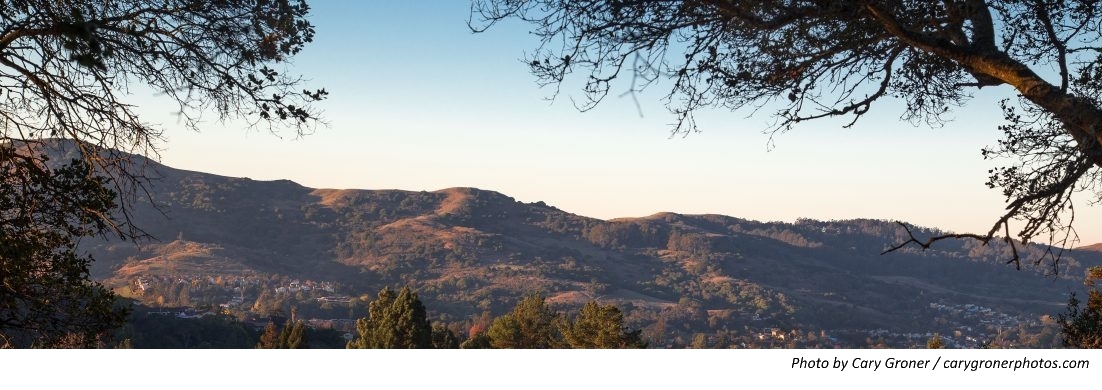HISTORY OF THE RICHMOND HILLS INTIATIVE
For several decades, our community has protected the Richmond Hills by fending off a seemingly endless series of ill-advised proposals to develop this beautiful and notoriously unstable area. In early 2015, a group of residents got together to look for a more permanent solution to this issue. We reached out for expert help, and had the good fortune to find Dick Schneider of the Sierra Club, with whom we met with for the first time on March 28, 2015. We decided that our best path forward was to attempt a blanket protection of a large area, similar to the Hercules Franklin Canyon Measure M. Soon after that meeting, the core group, with the invaluable assistance of Professor Robert Girard of Stanford University, started working out the details of the Initiative. Later, we met with City Council members and Richmond staff to iron out certain aspects of the proposal. The entire process of writing the Initiative took almost a year!
After submitting the Initiative to the Richmond City Clerk for a Title and Summary, the next step was to gather enough signatures of registered Richmond voters to qualify the Initiative for the ballot, which would enable it to be adopted by the City Council or placed on the ballot for voter approval. We held a meeting to orient volunteers on May 28th, 2016, and started our massive signature gathering drive in June 2016. Although we had originally hoped to get all the signatures at stationary points – markets, festivals and the like – we soon realized we would also need to canvass door-to-door, a much slower and more laborious process. The signature-gathering drive went on for 6 long months. After intense vetting of the signatures for validity, we submitted the Initiative for Qualification for Ballot on December 06, 2016. After the successful validation of the signatures, the City Council adopted the RHI in a unanimous vote on January 24th, 2017.
After the RHI went into effect in early 2017, four of the speculators who own parcels in the RHI area filed suit against Richmond in an attempt to overturn the initiative. In order to hire legal assistance to support the City’s case, we began a fund-raising drive which, thanks to your generous help, was very successful. The case was heard on January 3rd, 2018. The judge’s ruling in early May of the same year upheld every protective aspect of the Initiative, but found that we had created an inconsistency between the RHI and Richmond’s Land Use maps , a small technical flaw. Rather than sending the RHI back to the City to be fixed (as we believe the court was required by law to do), the judge invalidated the Initiative entirely.
We then filed an appeal of the trial court decision, raised more money, hired new legal counsel, and on October 26, 2019, we emerged victorious at the Court of Appeal with a ruling directing the City to cure the inconsistency between the Initiative and the city’s General Plan. Our team worked with the City to create that cure, which was approved unanimously by the City Council on April 6, 2021. On April 29 of the same year, the writ was returned to the court and the RHI’s status was no longer in any doubt.
This has been a six-year process, with a lot of ups and downs, snags and triumphs. It has required an enormous amount of effort from literally hundreds of people, who cannot be thanked enough. But, let us try anyways! Thank you, thank you, thank you!
The entire RHI process has been guided from its inception by a small core group of neighbors, whose names deserve to be mentioned – Jim Hogan, Sarah Willner, Deborah Schmidt, Joanne Spalding, Cary Groner, Janet Kutulas, Peter Simcich, and later Robin-Bedell-Waite. We met many times over the course of the six years to discuss the terms of the Initiative, strategy, fund-raising and etc.
We want to acknowledge the past efforts of Eleanor Lloynd, who, in previous decades, fended off development after development. We all owe her a huge debt of gratitude for her work, tenacity, and foresight!
We also want to acknowledge the many unsung heroes of the past who fought to protect the hills. Without all of their efforts, there would be nothing left of our hillsides to save.
Most of all, we must honor Dick Schneider, without whom none of this would have come to pass. His acumen and energy are unparalleled, and his enormous patience with our sometimes slow understanding of complex legal issues was wonderful. Best of all, Dick, possibly alone of all of us, never seemed to feel like it was hopeless. Even in the darkest of times, he kept us going.
Congratulations to everyone who has been involved in this process! Thinking of what might have been, it’s wonderful to realize what we have achieved. Hip Hip Hooray!!!
